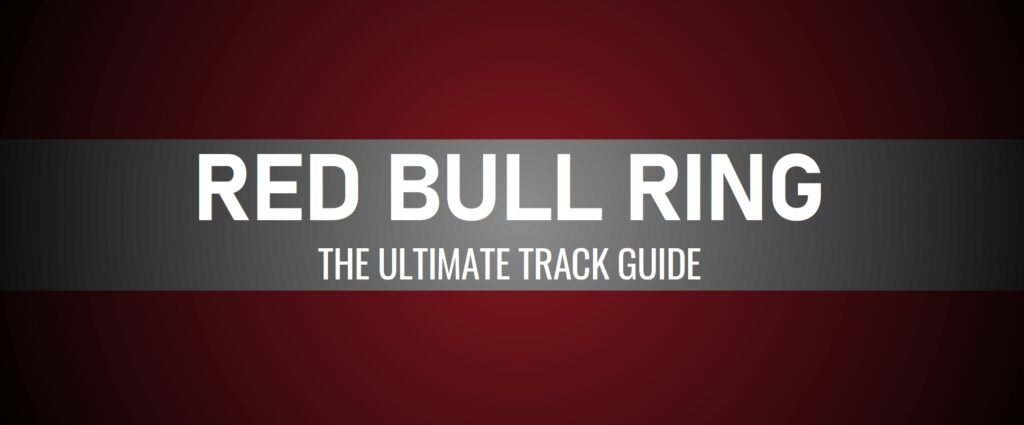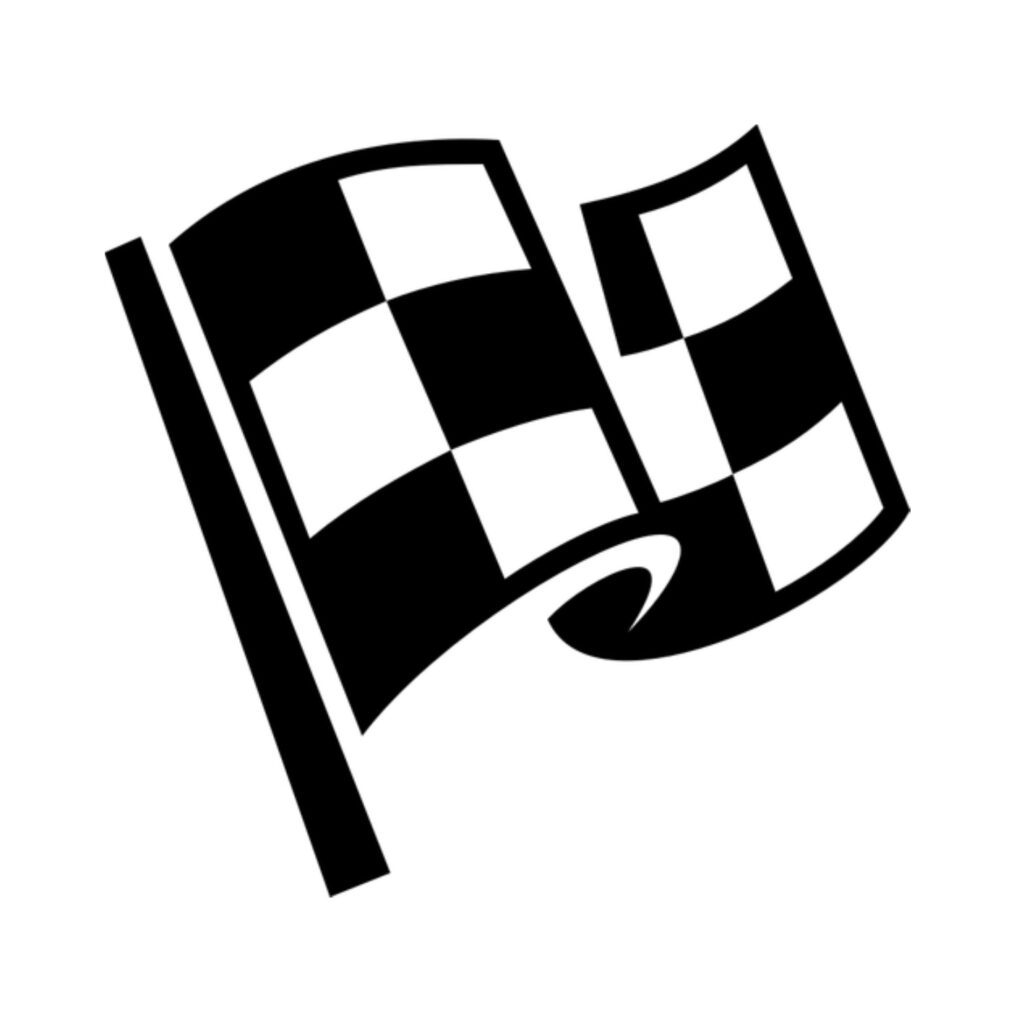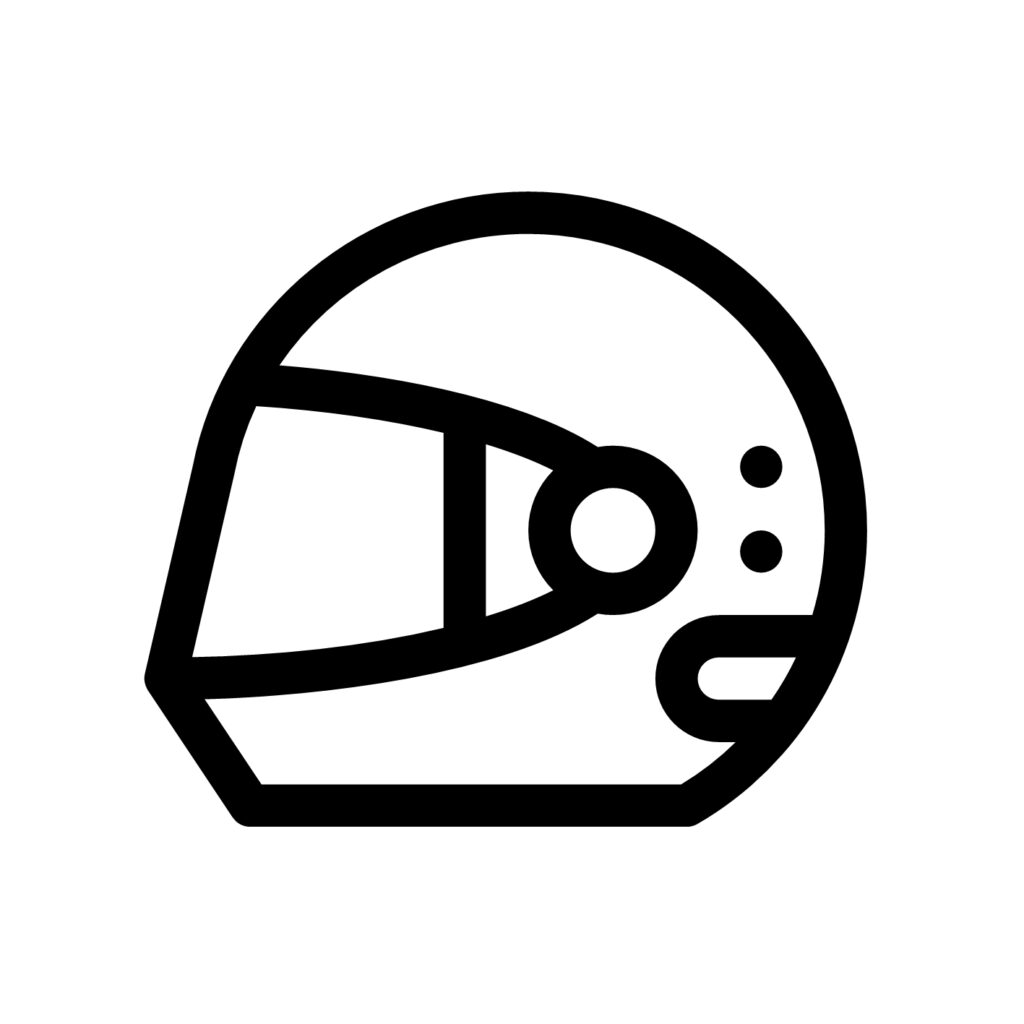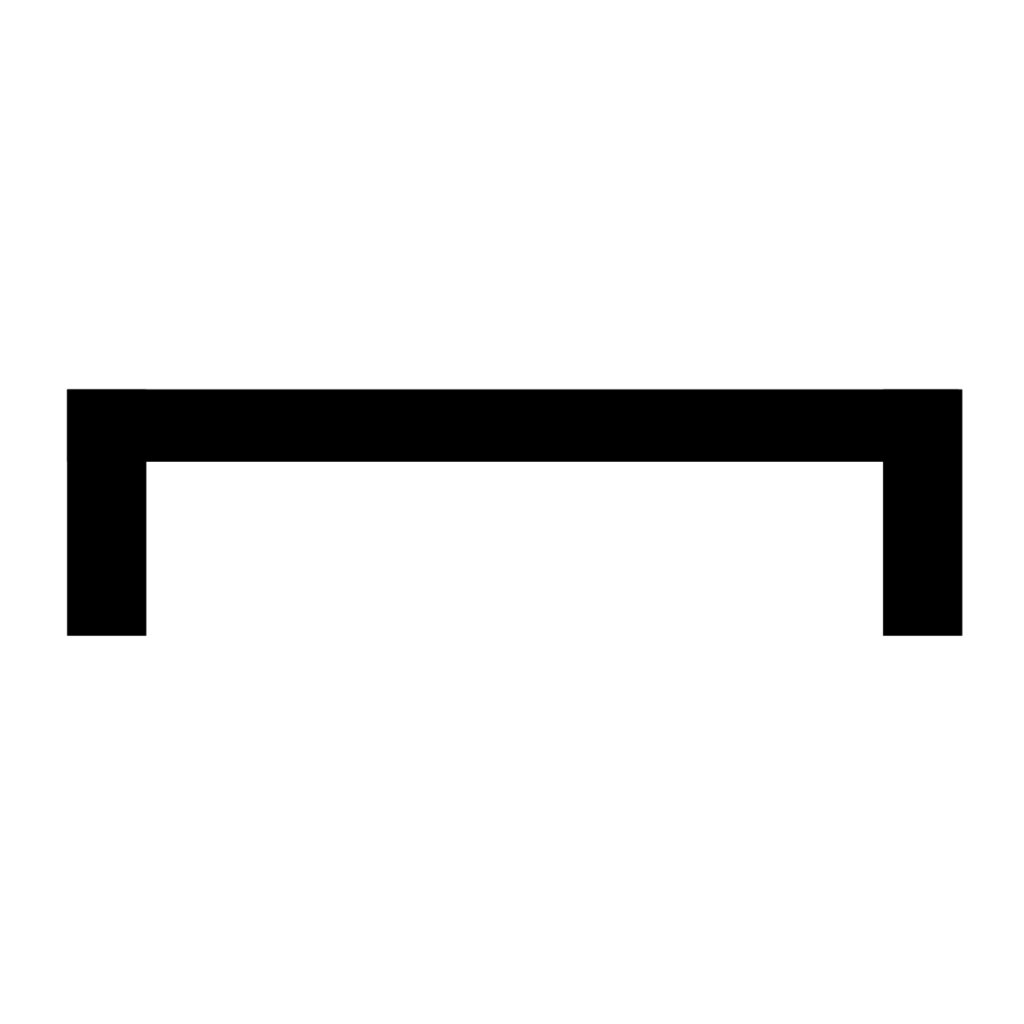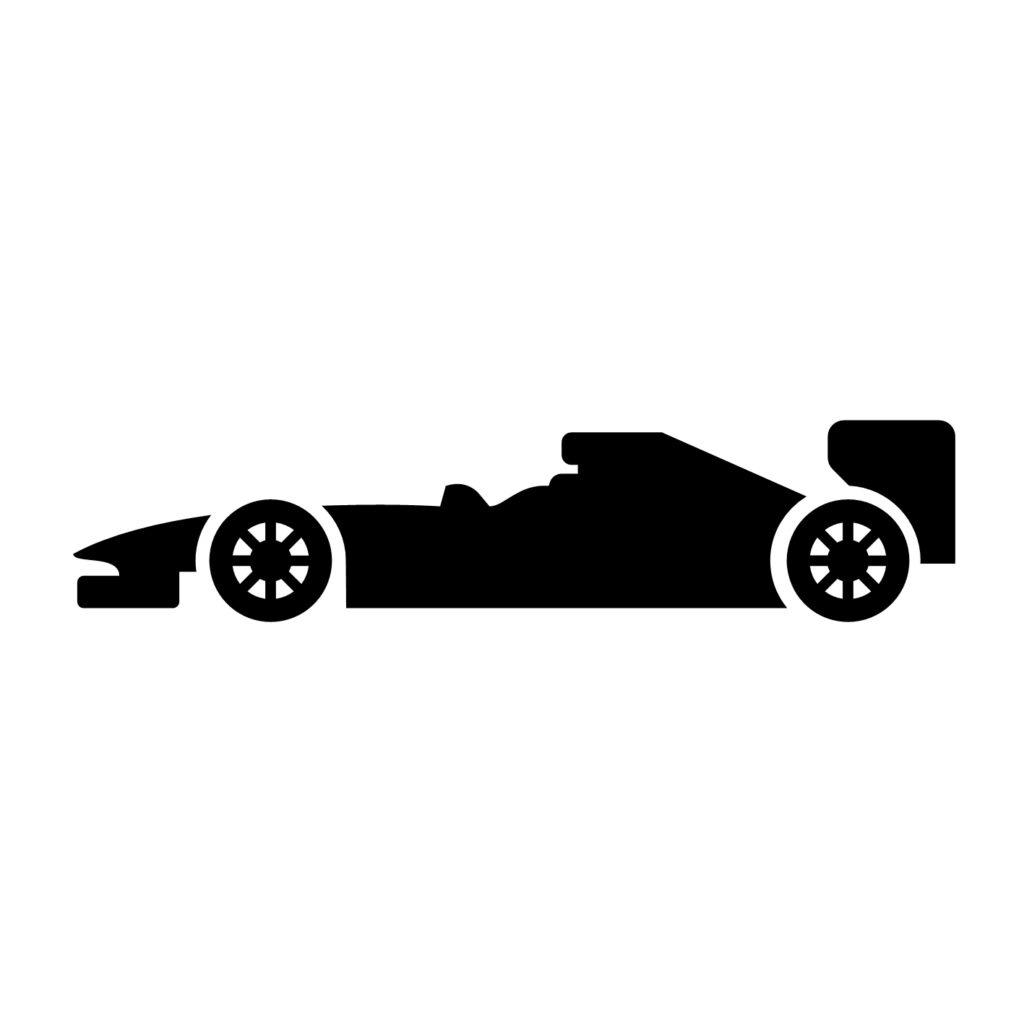Situated in the remote but breathtaking Styrian mountains, the track now known as the Red Bull Ring returned to the F1 calendar in 2014. With lap times of just over a minute, the circuit has been changed a lot over the years yet has maintained a nostalgic spark.
| FIRST F1 RACE | 1970 |
| TRACK LENGTH | 2.688 miles |
| NUMBER OF LAPS | 71 |
| NUMBER OF TURNS | 9 |
| MOST POLES | Max Verstappen (4) |
| MOST WINS | Max Verstappen (5) |
In 1958, a temporary circuit was set up on the military airfield in Zeltweg. The course, inspired by the way in which the iconic Silverstone circuit came into being, was marked out by hay bales and raced on in a non-chmpionship F1 event in 1963, before stepping up as an official round of the championship in 1964. The track surface, however, was far too bumpy and abrasive for F1 machinery, and the sport never returned to the circuit.
Instead, six years later, Formula 1 settled at a track just up the valley from the airfield, named the Osterreichring. The track was around double the length of the Zeltweg airfield track, and was tremendously fast, with flowing bends which swept through the mountainous surroundings.
With not much run-off area the track was dangerous, as proven by the 1975 race where a series of accidents marred the practice sessions. At the Hella-Licht curve, the first turn on the track, American racer Mark Donohue crashed through the catch-fencing, ultimately leading to his death and the death of a marshal. Changes were made to the track following the event, and a chicane was added making the former fastest corner on the track become the slowest.
The 1987 event was the last to be held at the original Osterreichring. Safety fears and lack of funding from the organisers to be in a position to make it safer meant the track disappeared from the calendar. The Austrian round of the championship was replaced with the Hungarian Grand Prix.
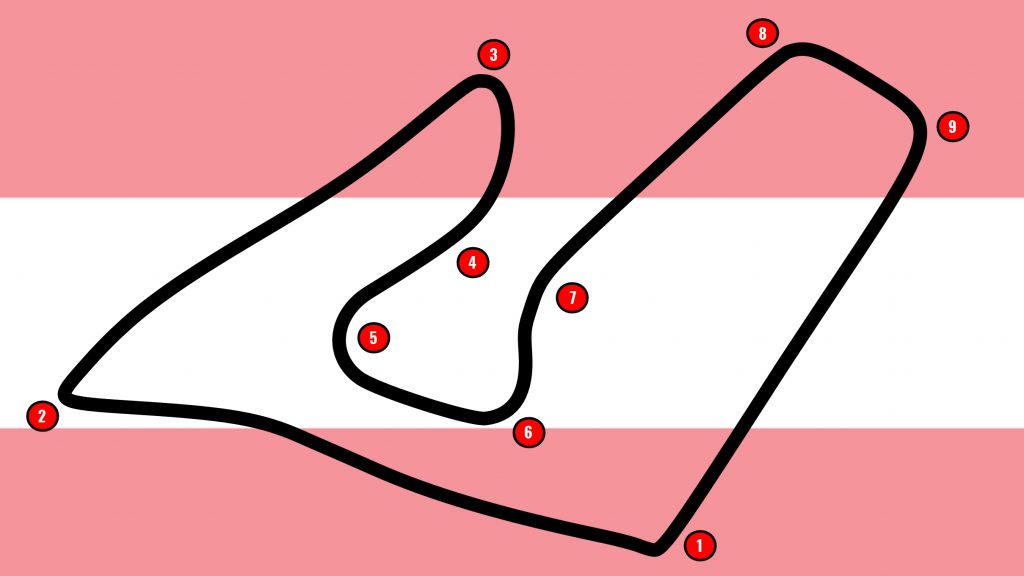
After a decade, the track returned as the revamped and renamed A1 Ring in 1997. The track had been given a new lease of life between 1995 and 1996 with funding from A1, a mobile telecommunications company. After being re-designed by Hermann Tilke, the A1 Ring was considerably shorter than the original track layout, cutting around a mile of track out where the first turn of the track now sits.
Although the track was much safer in its new form, many felt that the redesign had taken the soul of the place away. The event remained on the calendar for seven seasons before the last Grand Prix in 2003.
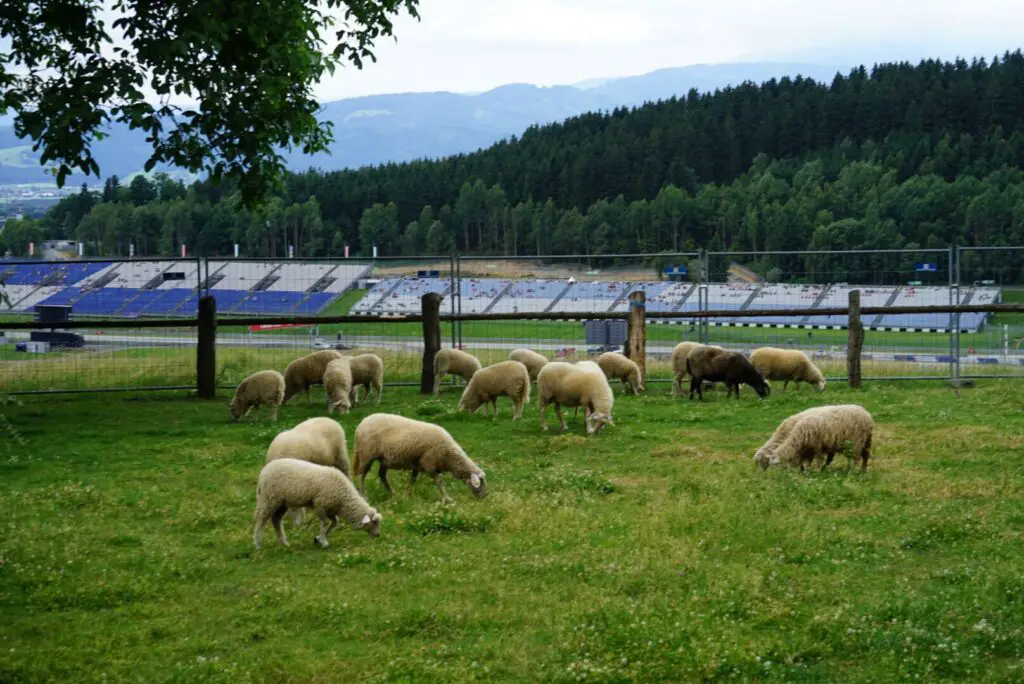
Considerable time was spent deciding what to do with the circuit, before the grandstands and pit buildings were demolished in 2004. Rendered as unusable for any form of motorsport, the track sat silent as construction work stopped.
Austrian driver Alexander Wurz claimed he would buy the circuit but this never happened. Instead, the track was bought by Red Bull owner Dietrich Mateschitz and was to be brought back up to the highest standard, with working commencing in late 2008. It was re-opened as the Red Bull Ring in 2011 and hosted rounds of DTM and Formula 2.
In July 2013, reports suggested that the Austrian Grand Prix would return at the Red Bull Ring in 2014. Indeed, in December 2013, the following year’s calendar was officially confirmed with the Austrian Grand Prix on the list.
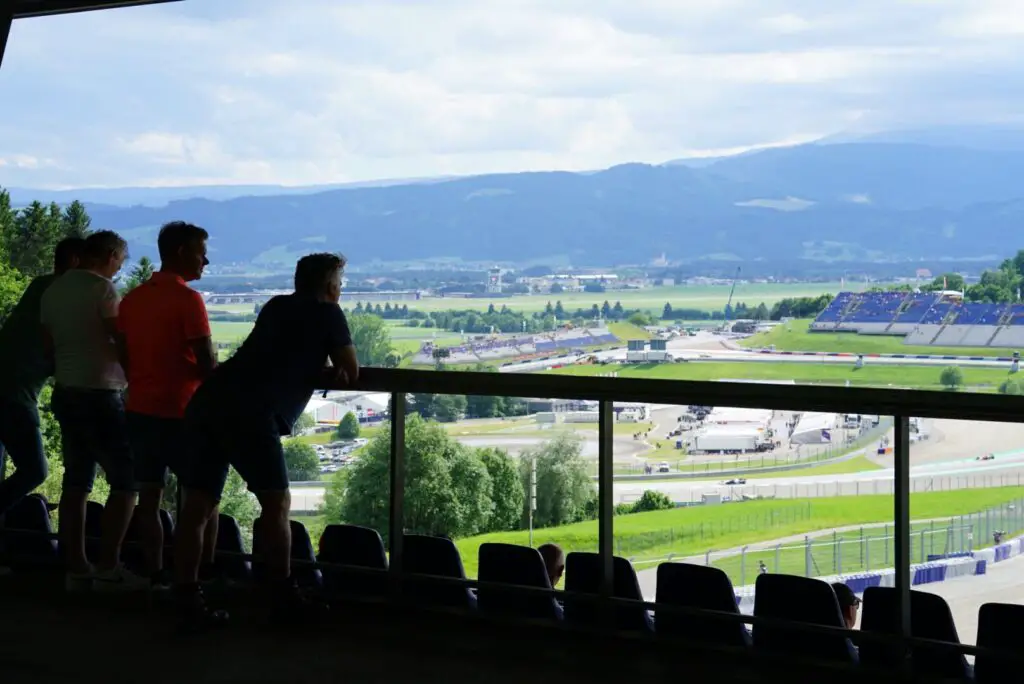
The Red Bull Ring hosted the opening rounds of the delayed 2020 Formula 1 season. With no fans in attendance due to the coronavirus pandemic, the Red Bull Ring hosted the Austrian Grand Prix and the Styrian Grand Prix. It was the first time that F1 raced at the same track on two consecutive weekends, as well as the first time two successive rounds of the championship were held in the same country since 1996. In 2021, as a result of the cancellation of the Turkish Grand Prix, the Red Bull Ring once again hosted two races.
The Red Bull Ring returned to hosting a single Grand Prix per year in 2022. In both 2022 and 2023, the venue hosted a Sprint race in addition to the main Grand Prix. The venue’s contract to host the Austrian Grand Prix was extended through to 2030 in July 2023.
LEARN MORE ABOUT THE RED BULL RING
DID YOU KNOW?
63.6 metres is the difference between the highest and lowest point at the Red Bull Ring, which sits 600 metres above sea level.
2023 AUSTRIAN GRAND PRIX RECAP
Verstappen was victorious in both the Sprint and the main race over the 2023 Austrian Grand Prix weekend, securing Red Bull’s tenth consecutive win.
With the 2023 Austrian Grand Prix hosting the second Sprint weekend of the season, there was just a single hour of practice on Friday before qualifying for Sunday’s race. It was a Friday to forget for Sergio Perez, whose multiple lap time deletions saw him continue a disappointing qualifying run. Team-mate Max Verstappen secured a fourth consecutive pole by just 0.048 seconds.
In Saturday morning’s Sprint Shootout, Lewis Hamilton was eliminated in SQ1, while fellow Mercedes driver George Russell suffered a hydraulic failure which prevented him from taking part in SQ2. Verstappen secured the fastest lap time once again in SQ3 and started the Sprint from the front of the grid.
The Sprint itself began in damp conditions with the two Red Bull drivers starting on the front row. It was Perez who took the lead at the start, though Verstappen was able to take the place back at Turn 3 as both drivers ran wide. Nico Hulkenberg made his way up to third and soon overtook Perez for second place.
It was not until the halfway point of the Sprint that Perez would finally re-pass the Haas, by which point his team-mate held a ten second lead. One lap later, Carlos Sainz followed Perez’s lead and overtook Hulkenberg for third. Charles Leclerc, Esteban Ocon and Lando Norris provided the midfield entertainment in the middle stages of the race.
Russell took the gamble to switch from intermediate to slick tyres with more drivers opting to switch. The slick runners made progress through the field, with Hulkenberg impressing and making his way up to sixth place. Verstappen won the Sprint by over 20 seconds, while Ocon won a drag race over the line to secure seventh place ahead of Russell.
At the start of Sunday’s Grand Prix, Verstappen easily stayed ahead on the run to Turn 1 and, despite challenges later around the lap from Leclerc was able to continue at the front of the field. After Saturday’s impressive showing, Hulkenberg’s Grand Prix came to an early end on Lap 15, with him pulling off track.
The resulting Virtual Safety Car period saw both Ferraris pit, though not race leader Verstappen who had already passed the pit entry before the VSC was called. Ferrari’s double stack stop saw both drivers lose time, with Sainz soon being passed by Lewis Hamilton, who had also stopped early.
Track limits were a focal point of the weekend, with Hamilton picking up a five second time penalty for exceeding them before the race had reached one quarter distance. Sainz re-passed Hamilton and also made his way by Perez to return to third place.
Race leader Verstappen made his first stop at the end of Lap 24, which promoted Leclerc into the lead and Sainz into second. The following lap, Verstappen made his way past Sainz and set off in pursuit of Leclerc. Lap 35 saw Verstappen close in on the back of Leclerc and the Red Bull driver made the race-winning move on Lap 35.
Verstappen led every lap thereon, as Perez continued to make progress back through the field. He and Sainz were embroiled in a battle for the final podium spot in the closing stages, with Perez securing the position at Turn 4 on Lap 61. Verstappen secured the fastest lap on his final tour of the circuit, leading home Leclerc for Red Bull’s tenth successive victory.
2022 AUSTRIAN GRAND PRIX RECAP
Max Verstappen took pole position and won the F1 Sprint at the 2022 Austrian Grand Prix, but it was Charles Leclerc who emerged victorious in Sunday’s race.
At the second race weekend to feature the F1 Sprint in 2022, the drivers had just an hour of Free Practice to prepare for qualifying. There was high drama in Q3 as both Mercedes drivers crashed out while setting fast laps. George Russell and Lewis Hamilton had been running well throughout qualifying but both pushed their cars too far. Hamilton brought out the first red flag with five minutes remaining in Q3, while Russell crashed at the final corner on his next attempt bringing out another red flag.
Max Verstappen was fastest in qualifying, setting the fastest time from Charles Leclerc by just 0.029 seconds. The duo lined up side-by-side for the start of the F1 Sprint on Saturday. Fernando Alonso was wheeled into the pit lane from the grid after Alpine mechanics left the tyre blankets on the car. The sprint race start was further delayed by Zhou Guanyu coming to a halt with engine issues at the back of the grid.
When Saturday’s race began, Verstappen maintained his lead, while Carlos Sainz passed his team-mate for second place. The Ferrari battle continued around Lap 1, with Leclerc coming out on top. Meanwhile, at Turn 1, Hamilton made contact with Pierre Gasly. The Ferraris continued to battle each other, allowing Verstappen to scamper away with the lead.
As the race reached its halfway point, Alex Albon tapped Sebastian Vettel’s Aston Martin, with the German spinning into the gravel. Sergio Perez made a fine comeback from 13th on the Sprint grid after having his Q3 lap times deleted for exceeding track limits. He finished the Sprint in fifth, while his team-mate claimed eight points with victory in the Saturday race.
At the start of Sunday’s Grand Prix, it was a replay of Saturday’s race with Verstappen staying ahead at the start. Sainz and Russell battled for third place, their battle allowing Perez to get alongside Russell. The Red Bull made contact with the side of the Mercedes and Perez was left spinning into the gravel and last in the order.
On Lap 12, Leclerc made a bold move on Verstappen at Turn 5 for the lead of the race. Verstappen subsequently pitted in an attempt to undercut the Ferrari. Leclerc pitted on Lap 27, emerging behind Verstappen but on much fresher rubber. By Lap 33, Leclerc was on the tail of Verstappen and the Dutchman did little to prevent the Ferrari passing him at Turn 3. Verstappen pitted for the second time four laps later, with Leclerc coming in on Lap 50. Leclerc overtook Verstappen on Lap 57, at the same point as he did earlier in the race.
Further back, a battle between Kevin Magnussen and Fernando Alonso soon became a five car tussle for eighth place, the quintet running within just a few car lengths. Vettel found himself spinning out, this time in an incident with Gasly, who received a time penalty for the altercation.
15 laps from the end, Sainz encountered power unit issues with his car igniting as the Spaniard made a hasty exit from the cockpit. While there was disappointment on the other side of the garage, Lelcerc delivered victory for the Scuderia. Verstappen followed him home in second place, with Hamilton recovering from Friday’s crash to a podium finish.
2021 AUSTRIAN GRAND PRIX RECAP
Max Verstappen secured Red Bull another home win at the 2021 Austrian Grand Prix, which was the first race to take place with a capacity crowd since the beginning of the coronavirus pandemic.
Formula 1 raced at the Red Bull Ring for a second consecutive weekend, with the Austrian Grand Prix welcoming back the sport’s first capacity crowd since before the coronavirus pandemic began. George Russell impressed in qualifying, reaching Q3 in a Williams car for the first time, while Fernando Alonso was unimpressed by a slow moving Sebastian Vettel preventing him from reaching the top ten shootout.
Max Verstappen took pole once again at the Red Bull Ring, with Lando Norris joining him on the front row. Verstappen led from the start with the Safety Car soon being called out following a first lap scrape for Esteban Ocon. Sergio Perez challenged Norris at the restart, with the McLaren driver forcing the Red Bull into the gravel. Norris was handed a 5-second penalty for the incident. Perez himself then picked up two 5-second time penalties for pulling similar moves on Charles Leclerc.
With Lewis Hamilton encountering damage, Valtteri Bottas passed his team-mate for second place. Hamilton then came under pressure from Norris, who secured the final podium place. Alonso denied Russell a point in the final laps of the race, while Kimi Raikkonen had a bizarre coming together with former team-mate Vettel. It was another dominant display from Verstappen, who led from start to end for the second week in a row.
2021 STYRIAN GRAND PRIX RECAP
On the first of two races at the Red Bull Ring, Max Verstappen dominated proceedings, leading the Styrian Grand Prix from start to end.
Max Verstappen secured a home pole for the Red Bull team at the Styrian Grand Prix, with Valtteri Bottas joining him on the front row. Verstappen led from the start and did not relinquish the lead for the rest of the afternoon. On the first lap, the backmarkers made contact at Turn 3. Pierre Gasly’s afternoon came to an early end as a result of the Lap 1 antics.
Lando Norris made his way up to third at the start and proved to be a challenge to overtake for both Sergio Perez and Valtteri Bottas. Williams’ George Russell had performed well all weekend, narrowly missing out on Q3, but a pit stop issue ruined his chances of a points finish and he eventually retired with a power unit issue.
Charles Leclerc was the man on the move in the closing stages of the race, moving from outside the points up to seventh. Lewis Hamilton pitted with two laps to go in order to take the extra point for the fastest lap and he joined Verstappen on the podium along with his Mercedes team-mate.
2020 STYRIAN GRAND PRIX RECAP
Lewis Hamilton was peerless at the 2020 Styrian Grand Prix, taking pole by over a second in wet conditions and claiming a comfortable win ahead of his team-mate.
For the first time in Formula 1 history, the Red Bull Ring hosted two races on consecutive weekends, with the second race titled the Styrian Grand Prix. The second weekend was held in contrasting conditions to the first. Rain on Saturday saw Free Practice 3 cancelled, while qualifying was held in wet conditions.
The adverse conditions allowed George Russell to reach Q2 for the first time in his career, while Lewis Hamilton dominated the final session and took pole by over a second. Max Verstappen lined up alongside Hamilton on the front row, while Carlos Sainz qualified a career-best third.
The order remained the same on the first lap, while further back the two Ferrari drivers collided, resulting in a double DNF for the Scuderia in what was fast becoming a season to forget. Hamilton was not challenged for the victory and took a comfortable win ahead of his team-mate, who had raced Verstappen hard for second place.
Behind the front three, a battle for fourth place between Alex Albon and Sergio Perez very nearly resulted in Albon colliding with a driver in the same spot as he had done one week previously. Perez picked up front wing damage as a result.
On the penultimate lap, in the fight for sixth place, Lance Stroll attempted an overtake on Daniel Ricciardo, resulting in both drivers running wide at Turn 3. Lando Norris took advantage of the situation to sweep by the duo. Stroll fought back, but Norris soon re-passed on the final lap. With Perez struggling with the damage to his wing, the McLaren was closing on the Racing Point, and Norris was able to secure fifth place at the penultimate corner.
2020 AUSTRIAN GRAND PRIX RECAP
The 2020 Formula 1 season began four months later than planned with the Austrian Grand Prix – a race which was well worth waiting for.
The coronavirus pandemic ended the Australian Grand Prix before the on-track action had even begun and went on to decimate the opening half of the calendar, but the 2020 season finally began at the start of July with the Austrian Grand Prix.
It was a familiar order at the front in qualifying, with Mercedes securing the two fastest times. Valtteri Bottas brought out the yellow flags in Q3 with a trip across the grass, but had already done enough to secure pole position. Bottas’ off caused problems for Lewis Hamilton, who was handed a three-place grid penalty for failing to slow for the yellow flags.
At the start, Bottas maintained his lead, with Max Verstappen and Lando Norris vying for second place. Hamilton was soon back up to second place, with his charge helped by engine issues for Verstappen, which saw him retire from the race.
Ferrari had struggled for pace all weekend, and Sebastian Vettel compounded those problems with a spin after trying to pass Carlos Sainz. The Ferrari driver dropped to the back of the field as a result. Further retirements followed for Daniel Ricciardo, Lance Stroll and Kevin Magnussen, before George Russell brought out the Safety Car as he broke down with 20 laps of the race remaining.
At the restart, Kimi Raikkonen lost a wheel, bringing out the Safety Car once more. With ten laps to go, Alex Albon – on fresher tyres having pitted under the Safety Car – attempted an overtake on Hamilton for second place. The pair collided, and Albon fell down the order. Charles Leclerc moved into an unlikely third position – which would become second following a five-second time penalty for Hamilton, who was deemed to have caused the collision with Albon.
Hamilton’s penalty promoted Norris into third place, recording the first podium finish of his career. Norris set the Fastest Lap on the final lap of the race, allowing him to close to within five seconds of the Mercedes driver. Nicholas Latifi, the only rookie in the field, was last to cross the line and finished the race eleventh, just outside of the points.
2019 AUSTRIAN GRAND PRIX RECAP
A thrilling 2019 Austrian Grand Prix saw young chargers Charles Leclerc and Max Verstappen starting alongside each other on the front row, with Verstappen eventually triumphing in an explosive late race battle.
Qualifying saw a multitude of blocking incidents, with George Russell picking up a three-place penalty for blocking Daniil Kvyat and Lewis Hamilton receiving the same penalty for impeding Kimi Raikkonen. While Sebastian Vettel was unable to take part in Q3, it was Charles Leclerc who took pole, lining up alongside Max Verstappen to set a new record for the youngest front row in F1 history.
Verstappen had a poor start and dropped down the order. Lando Norris had a flying start and was up to third at Turn 1. Norris’ time in the top three didn’t last long, as Hamilton and Kimi Raikkonen passed him in the next corners. Vettel made up for his qualifying woes by reaching fourth place before his pit stop; but the team weren’t ready for him and he suffered a long stop.
Hamilton’s pit stop was delayed as he took on a new front wing following earlier damage. On Lap 50, Verstappen overtook Vettel for third place, before overtaking Valtteri Bottas for second six laps later. This led to a thrilling conclusion of the race, in which Verstappen hunted down race leader Leclerc. On Lap 68, Verstappen made a bold move on the Ferrari at Turn 3 but couldn’t make it stick. He tried again on the next lap and was more successful; though his move caught the attention of the stewards.
Verstappen went on to win and his victory was confirmed hours after the race as the stewards decided not to penalise the Dutchman. Bottas completed the podium, as Vettel overtook Hamilton for fourth on the penultimate lap. The victory was the first for a Honda power unit since the 2006 Hungarian Grand Prix.
2018 AUSTRIAN GRAND PRIX RECAP
A rare double DNF for Mercedes paved the way for Max Verstappen to take Red Bull’s first victory at their home event.
Sebastian Vettel picked up a three-place grid penalty for impeding Carlos Sainz in the second part of Qualifying. The German driver started from sixth, while Valtteri Bottas took his first pole of the season.
Bottas was down to third by the first turn though, as both Lewis Hamilton and Kimi Raikkonen passed him. Bottas soon re-took second with an impressive overtake, leaving Raikkonen fighting with Max Verstappen for third place. Bottas’ work was in vain though – he retired on the fourteenth lap with a gearbox problem.
A Virtual Safety Car period ensued, an opportunity which Verstappen took to pit while leader Hamilton didn’t. Verstappen was way ahead of the Mercedes as a result, Hamilton knocked down to fifth after a gutsy overtake from Vettel. James Vowells soon apologised to Hamilton for the strategic error, but it ultimately didn’t matter – Hamilton retired with seven laps of the race remaining.
Verstappen went on to take his first win of the season, finishing just over a second ahead of Raikkonen. Vettel completed the podium in third and re-took the championship lead as a result.
RED BULL RING WINNERS AND POLESITTERS
| Year | Polesitter | Team On Pole | Winner | Winning Team |
|---|---|---|---|---|
| 1970 | Jochen Rindt | Lotus | Jacky Ickx | Ferrari |
| 1971 | Jo Siffert | BRM | Jo Siffert | BRM |
| 1972 | Emerson Fittipaldi | Lotus | Emerson Fittipaldi | Lotus |
| 1973 | Emerson Fittipaldi | Lotus | Ronnie Peterson | Lotus |
| 1974 | Niki Lauda | Ferrari | Carlos Reutemann | Brabham |
| 1975 | Niki Lauda | Ferrari | Vittorio Brambilla | March |
| 1976 | James Hunt | McLaren | John Watson | Penske |
| 1977 | Niki Lauda | Ferrari | Alan Jones | Shadow |
| 1978 | Ronnie Peterson | Lotus | Ronnie Peterson | Lotus |
| 1979 | Rene Arnoux | Renault | Alan Jones | Williams |
| 1980 | Rene Arnoux | Renault | Jean-Pierre Jabouille | Renault |
| 1981 | Rene Arnoux | Renault | Jacques Laffite | Ligier |
| 1982 | Nelson Piquet | Brabham | Elio de Angelis | Lotus |
| 1983 | Patrick Tambay | Ferrari | Alain Prost | Renault |
| 1984 | Nelson Piquet | Brabham | Niki Lauda | McLaren |
| 1985 | Alain Prost | McLaren | Alain Prost | McLaren |
| 1986 | Teo Fabi | Benetton | Alain Prost | McLaren |
| 1987 | Nelson Piquet | Williams | Nigel Mansell | Williams |
| 1997 | Jacques Villeneuve | Williams | Jacques Villeneuve | Williams |
| 1998 | Giancarlo Fisichella | Benetton | Mika Häkkinen | McLaren |
| 1999 | Mika Häkkinen | McLaren | Eddie Irvine | Ferrari |
| 2000 | Mika Häkkinen | McLaren | Mika Häkkinen | McLaren |
| 2001 | Michael Schumacher | Ferrari | David Coulthard | McLaren |
| 2002 | Rubens Barrichello | Ferrari | Michael Schumacher | Ferrari |
| 2003 | Michael Schumacher | Ferrari | Michael Schumacher | Ferrari |
| 2014 | Felipe Massa | Williams | Nico Rosberg | Mercedes |
| 2015 | Lewis Hamilton | Mercedes | Nico Rosberg | Mercedes |
| 2016 | Lewis Hamilton | Mercedes | Lewis Hamilton | Mercedes |
| 2017 | Valtteri Bottas | Mercedes | Valtteri Bottas | Mercedes |
| 2018 | Valtteri Bottas | Mercedes | Max Verstappen | Red Bull |
| 2019 | Charles Leclerc | Ferrari | Max Verstappen | Red Bull |
| 2020 Austria | Valtteri Bottas | Mercedes | Valtteri Bottas | Mercedes |
| 2020 Styria | Lewis Hamilton | Mercedes | Lewis Hamilton | Mercedes |
| 2021 Styria | Max Verstappen | Red Bull | Max Verstappen | Red Bull |
| 2021 Austria | Max Verstappen | Red Bull | Max Verstappen | Red Bull |
| 2022 | Max Verstappen | Red Bull | Charles Leclerc | Ferrari |
| 2023 | Max Verstappen | Red Bull | Max Verstappen | Red Bull |

